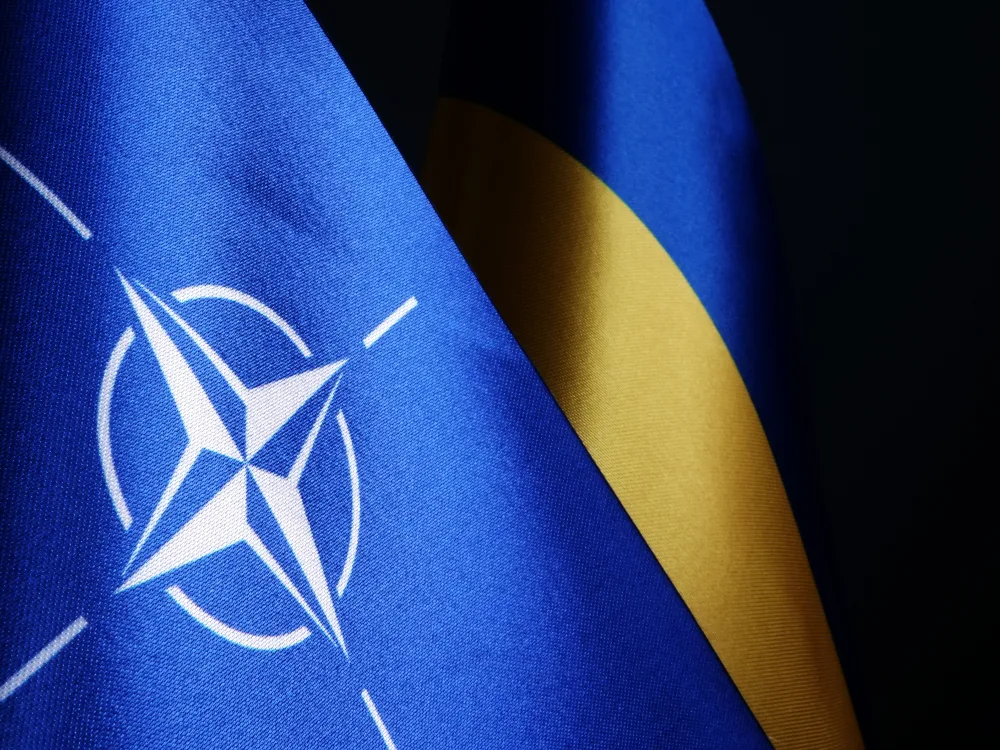NATO Should Not Accept Ukraine—for Ukraine’s Sake
As the tides of battle have shifted against Ukraine, amid doubts about whether the U.S. Congress will approve a new round of aid, influential experts such as former NATO chief Anders Fogh Rasmussen and former U.S. Ambassador to NATO Ivo Daalder are repeating their earlier calls to bring Ukraine into NATO sooner rather than later. This step is marketed both as a way to convince Russia that its military campaign cannot keep Ukraine out of the alliance and as needing to provide adequate security for Ukraine when the war finally ends.
Reasonable people can and will disagree about the wisdom of this recommendation, because the contending positions rest on predictions about an uncertain future. In effect, we are all making bets about what the effects of bringing Ukraine would be. To make my own position clear: If I were a member of U.S. Congress I would vote for the additional aid package without hesitation, because I want Ukraine to be able to hang on to the territory it still controls and I want Moscow to realize that trying to take more territory is going to be costly and difficult. More aid today will improve Kyiv’s bargaining position when serious discussions begin, most likely after the U.S. presidential election in November. That said, bringing Ukraine into NATO now is a bad idea that will prolong the war and leave Kyiv in an even worse position over time.
Let’s start by recalling that the North Atlantic Treaty does not give any country the right to join if it meets certain criteria. Article 10 merely says that “the Parties may, by unanimous agreement, invite any other European State in a position to further the principles of this Treaty and to contribute to the security of the North Atlantic area to accede to this Treaty.” is a more recent development. It is sometimes viewed as a formal commitment that any aspiring country can join once it meets NATO’s membership criteria. In effect, the open door policy subtly shifts agency from NATO to aspiring members; it tells the latter that “the door is open and you’re free to walk in once you’ve met our standards.” The original treaty implies something slightly different, however: It says the door is closed until the existing members collectively agree that bringing in a new member will “further the principles of the treaty and … contribute to the security of the North Atlantic area.” At that point the members can decide to open the door and issue an invitation. The distinction is an important one, insofar as the original treaty creates no presumption that the alliance is actively committed to expanding. Hungary’s recent campaign to delay Sweden’s entry into NATO for several years reminds us how this process really works in practice: Sweden had no “right” to join until all the other members agreed.
Turning to Ukraine, my belief that bringing it into NATO now (or in the near future) is unwise rests on several assumptions. One is that Ukraine cannot reverse the situation on the battlefield and reconquer its lost territory unless it gets a lot more weaponry and has time to reconstitute its forces after the setbacks of the past year. It is suffering from a severe (and probably irreversible) shortage of manpower and the combination of drone surveillance, artillery, and extensive Russian fortifications will make it difficult-to-impossible for Kyiv to make large territorial advances. Ukraine’s cheerleaders in the West were wrong last spring when they offered up optimistic forecasts about the then-upcoming counteroffensive, and they are repeating this error by suggesting that there are still lots of ways for Ukraine to turn the tide. I wish it were otherwise, but we should base policy choices on the world as it is, not as we might like it to be.
